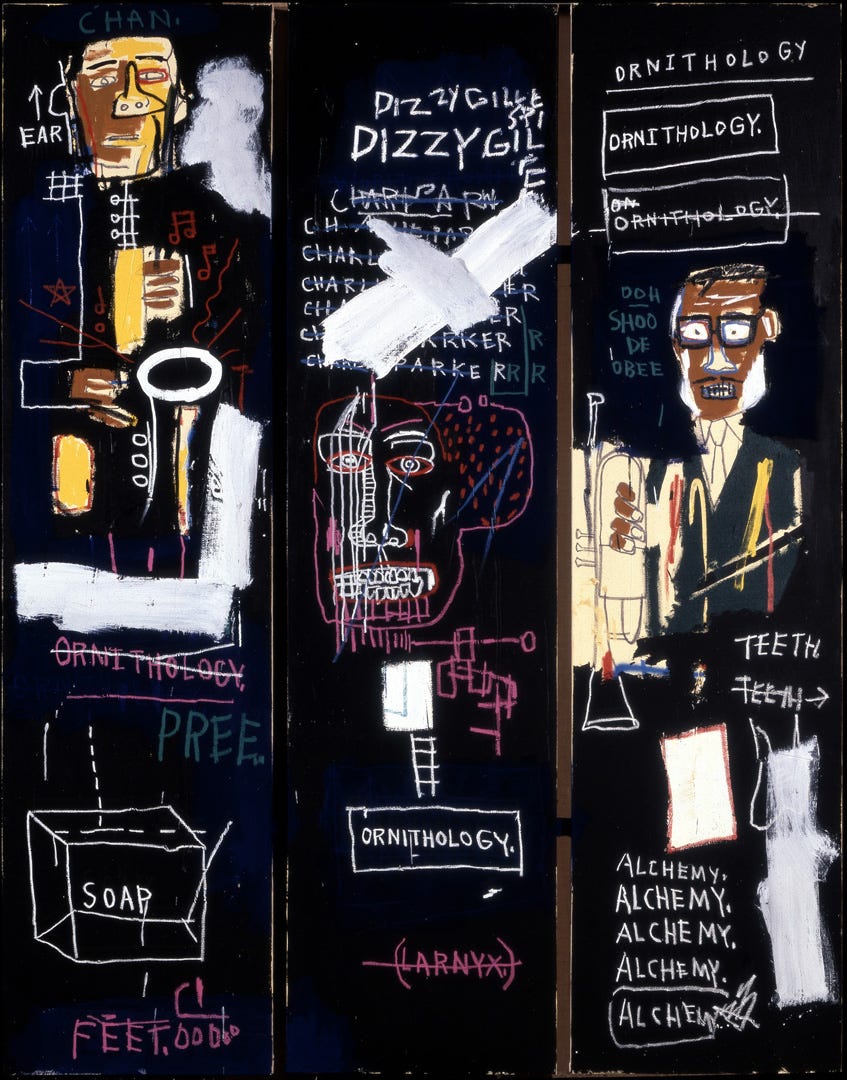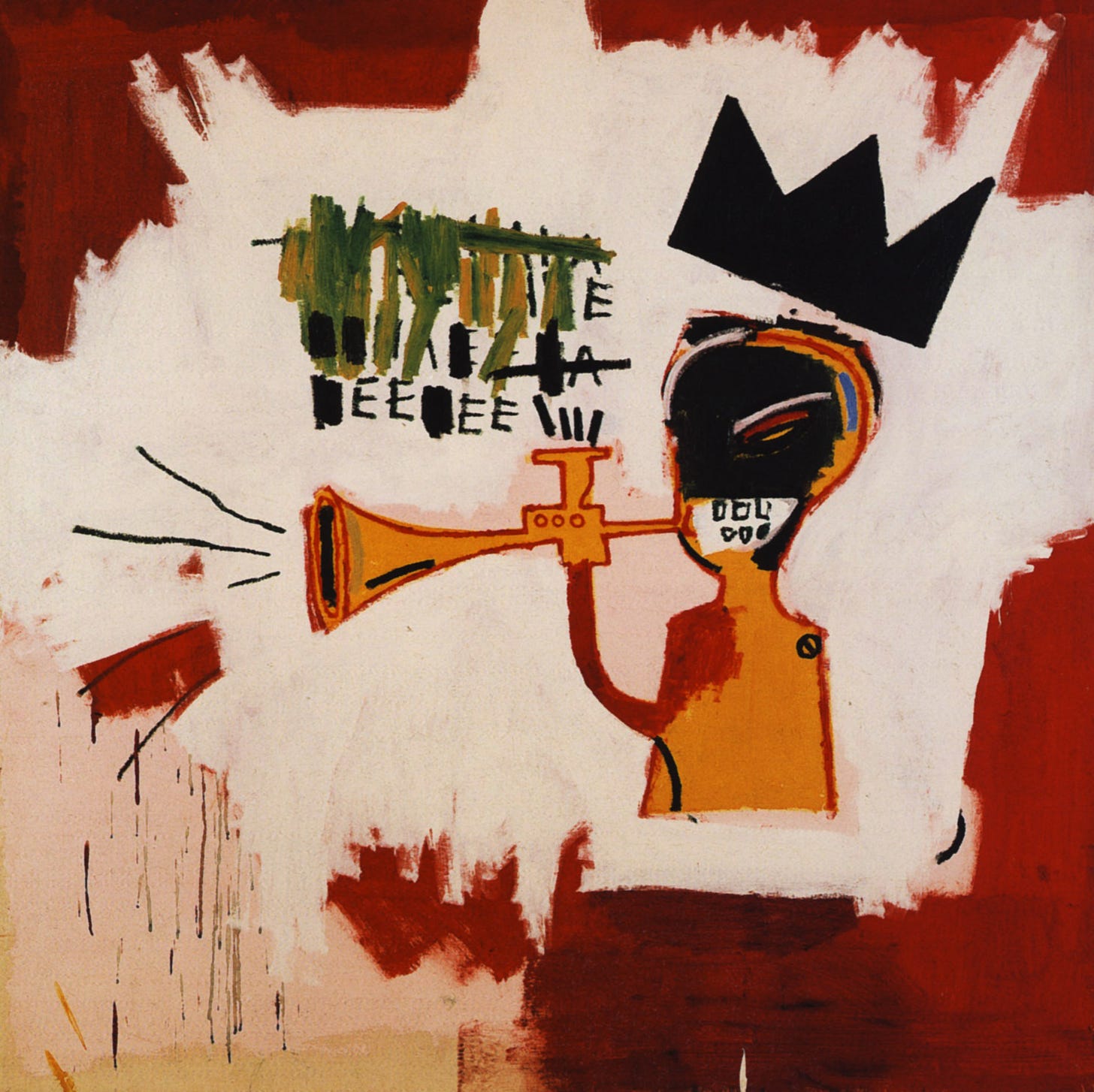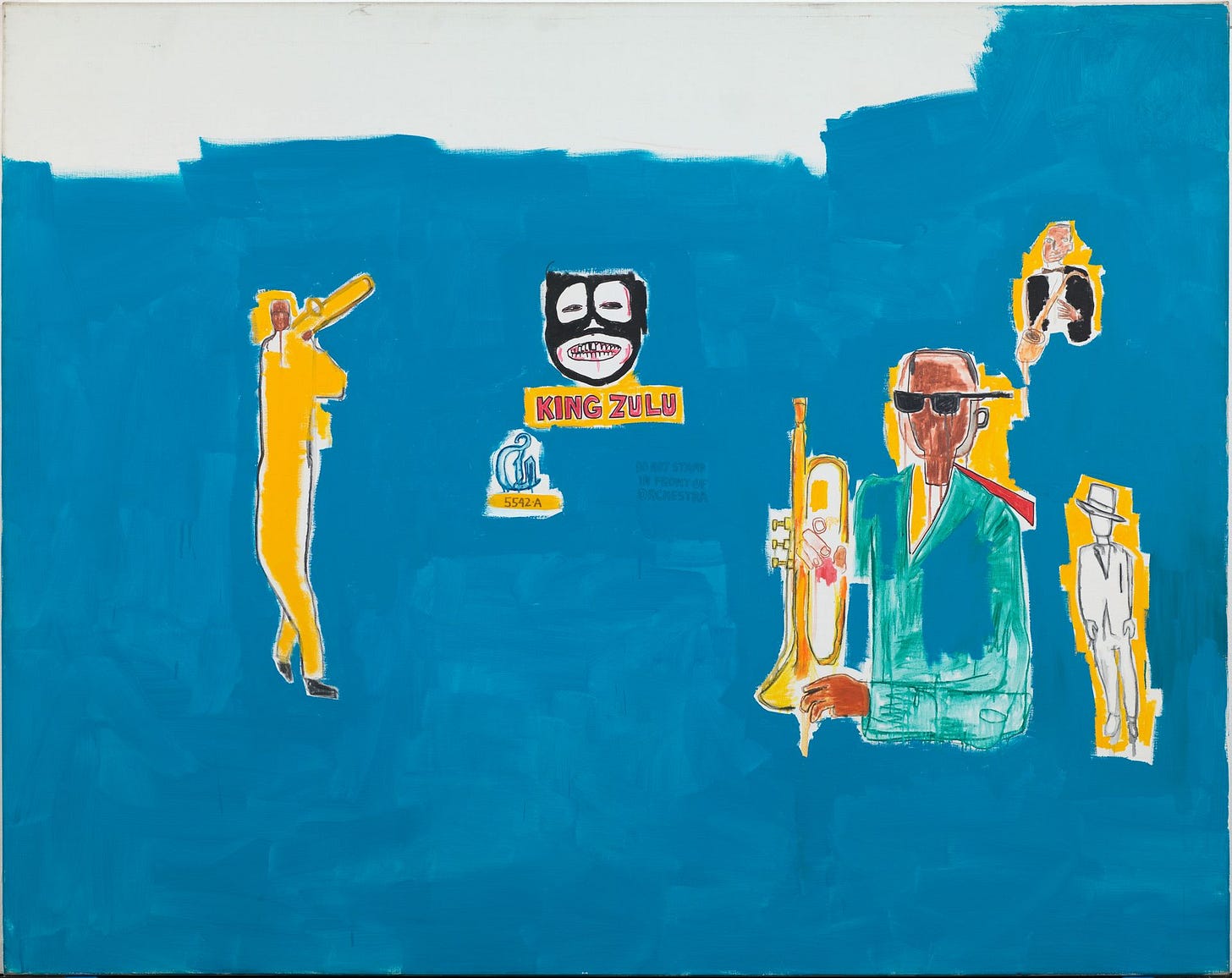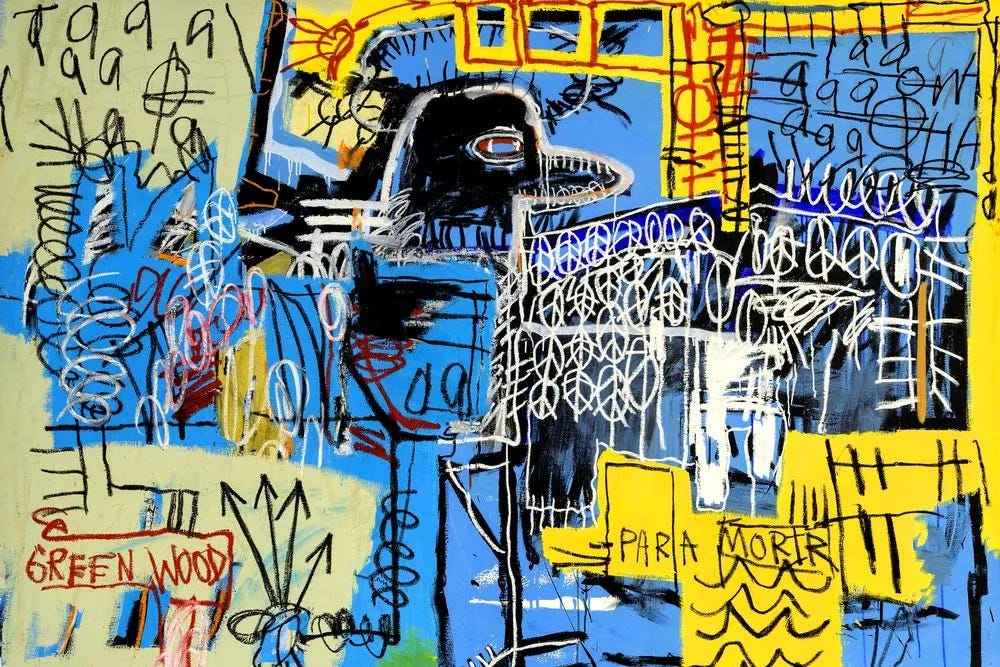If Basquiat's art were a playlist, it would consist of bebop jazz masterpieces—let's hit play and delve into his syncopated genius! Born in 1960 to a Haitian father and Puerto Rican mother, Jean-Michel Basquiat was a true virtuoso, who, by age four, was already reading and writing, and grew up fluent in three languages. His father's extensive jazz record collection introduced Basquiat to the bebop rhythms of legends like Charlie Parker and Dizzy Gillespie, sounds that later exploded onto his canvases with vibrant colours and frenetic energy.
The improvisational nature of jazz, where musicians spontaneously create within a framework, resonated with Basquiat's approach to painting. He often worked rapidly, layering images and text, allowing subconscious thoughts to flow onto the canvas.
Before his canvases started echoing the syncopated rhythms, Basquiat was tagging the streets of New York under the pseudonym SAMO, leaving cryptic messages that challenged the status quo. This graffiti phase was his own form of urban jazz—a rebellious, free-form expression that caught the eye of the art world. During that time in late 70s, Basquiat also played clarinet and synthesizer, and performed with his experimental rock band, Gray.
His paintings from 1982-1983, such as Trumpet, are echoing the spontaneity of a jazz solo. Basquiat's King Zulu references Louis Armstrong's 1949 coronation as King of the Zulu Social Aid & Pleasure Club. The painting's vibrant colors and rhythmic patterns evoke the lively spirit of jazz and its cultural roots.
In total, Basquiat created over thirty paintings referencing jazz musicians and recordings. Through such works, Basquiat not only celebrated jazz icons but also explored themes of identity, race, and the African American experience, much like the music he admired.
Charlie Parker, affectionately known as "Bird" and leading figure in developing bebop style, revolutionized jazz with his rapid tempos and complex chord progressions, embodying the spirit of innovation and rebellion. His untimely death at 34 due to substance abuse cast a shadow over the jazz world, a narrative paralleled in Basquiat's own life. Basquiat's addiction to heroin led to his premature death at 27. Both artists, meteors in their respective fields, burned brightly but were extinguished too soon, leaving behind legacies that continue to influence and inspire.

In one of his last notes, Basquiat expressed a desire to buy a saxophone, perhaps yearning to connect more deeply with the music that had always inspired him. Next time you see a Basquiat painting, feel the syncopated rhythm, the genius. Or maybe, just put on Charlie Parker’s Ornithology right now and let yourself feel the same!
Art needs more eyes — and so does this blog.
It’s free to read, but only grows if it travels.
Liked it even a bit? Tap the heart.
A line stuck with you? Drop it in a comment.
Smiled once? Hit restack.
Want to keep this writing alive? Send it to a curious friend to subscribe.








Incredibly talented, but only 28 years of life.